World’s Apart?
Putting your sea ride in your car. The sun is coming up, and your stuff is in a bag. It is a relaxing event. Using only a few easy strokes to move through the calm water. The calm water below is disturbed by your moves.
But let’s take a step back.
What do you ride again? A boat or a kayak? While they have some similarities in terms of design and features, any expert paddler will tell you that they are not at all the same. This doesn’t even include the different kinds of boats and canoes.
There are sit-inside kayaks, recreational kayaks, race kayaks, and recreational canoes. Yes, that list could go on forever. Which ride do you want to go on? To make up your mind, you’ll need to be able to tell them apart really well.
This is why we are going to talk about the pros and cons of both ships. Get your sticks ready, and let’s go.
Canoe vs. Kayak: Their Differences
People who have never been on either boat would not be able to tell them apart. There are some small changes between the two that can have a big effect on how well they work.
Not just because it was the first one I tried, but because I like the cruising kayak better. I like how quick and agile it is, but I wish it were more stable.
Let’s talk about the main ways they are different. You should pay close attention to how they handle and what they are made for, from the small to the large. This is the most important thing that will help you make the right choice.
The Cockpit or Seating Area
Both kayaks and canoes have very different ways of setting up their seats. Canoes usually have seats that are higher up. It’s not very comfy and looks like a typical park bench seat.
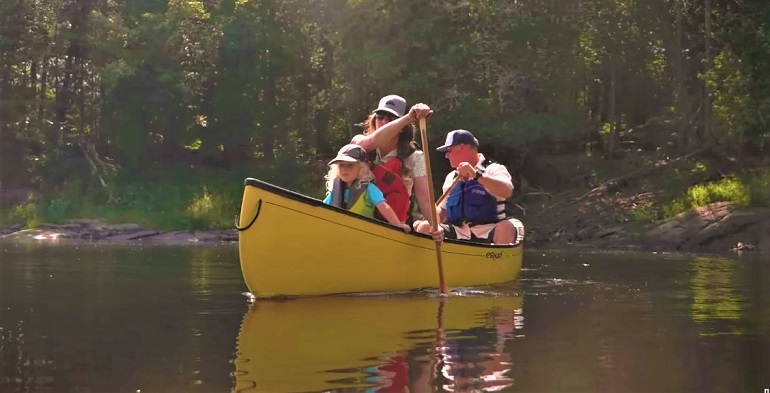
The seats in a dugout canoe, a solo canoe, a whitewater canoe, and a race canoe for one or two people are all set up the same way. The raised seat does help with the angle of your strokes, but it is less comfy than what a kayak usually has.
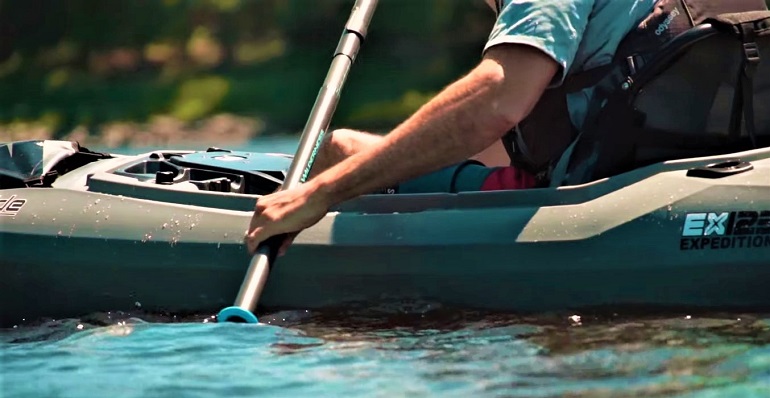
Any kayak, not just a sit-inside kayak, has a seat in the bottom of the boat. It would be much more comfortable for you to spread your legs out in front of you this way.
Paddling with Canoes Vs. Kayaks
Canoe paddles and kayak paddles are very different. Not so much in shape as in number. One paddle is enough for a boat. It’s longer and works much better than two boat paddles.
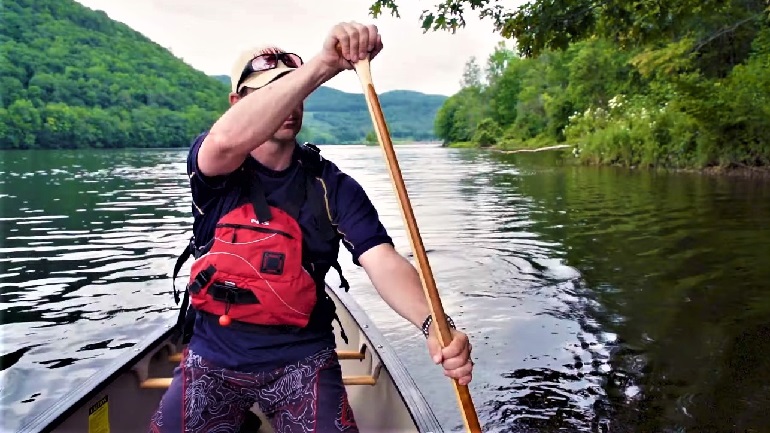
Both sides of the boat need a canoe paddle, but you don’t have to switch from one side to the other. It is possible to move in a straight line without having to switch sides if you use certain strokes.

Kayaks, on the other hand, have two blades. There is a paddle for every side. This might seem like it would make sea kayaking trips more fun, but having two boards means twice as much work.
Overall Boat Designs
The center of the boat will usually be open. The top is completely open and out in the weather. A top boat will have two or even three seats. As was already said, these seats are raised and not the most comfy choice.
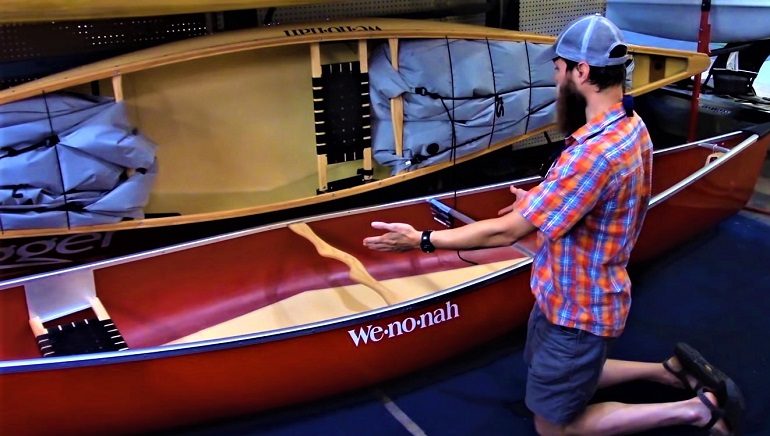
Seaboats will have a cockpit that is closed off. Inside, you’ll be lower in the water, and the closed deck is a great way to keep your things safe. There are often storage areas in either the bow or the stern of many sit-on-top kayaks. There are times when an inflatable boat has places to store things in both areas.
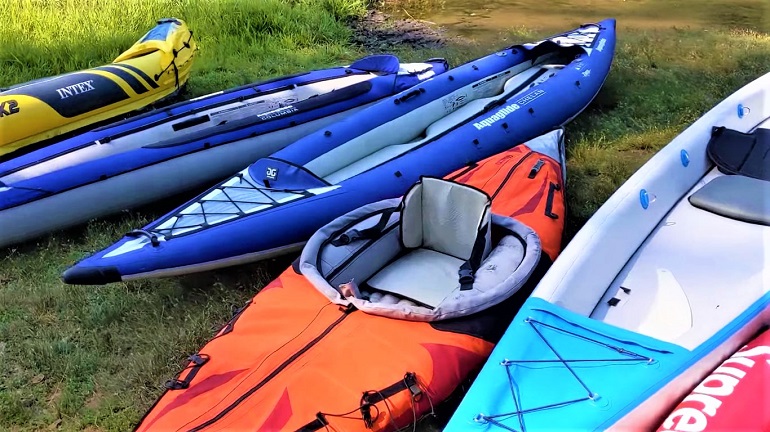
Unlike sit-on-top kayaks, typical canoes tend to be wide and pointed at both ends.
Hopping Onboard
For a kayak and a canoe, even something as simple as getting into your boat is different. If you want to get into a kayak, you have to enter at an angle. Start by putting your boat in the water. Then, grab the dock and put your feet in the cock pit.
After that, move your legs in farther until you have enough room to sit down. This is best done in rivers that move slowly and along safe coastlines.
It’s much easier and simpler to get into a boat.
Put your front foot on the far side of the boat and lean into it. Your body will move to the side that is closest to the dock on its own.
Should You Get a Canoe or Kayak?
At this point, you should have a better idea of what each type of tank can do. You might even be beginning to think about which one you should buy.
I’m going to quickly go over the pros and cons of both boats and kayaks to help you decide or change your mind.
The Advantages of a Canoe
A canoe is wider and has much more space for your gear. You can easily take with you a lot more gear with a canoe than with a kayak. This carrying capacity is what makes them a better option for traveling long distances.
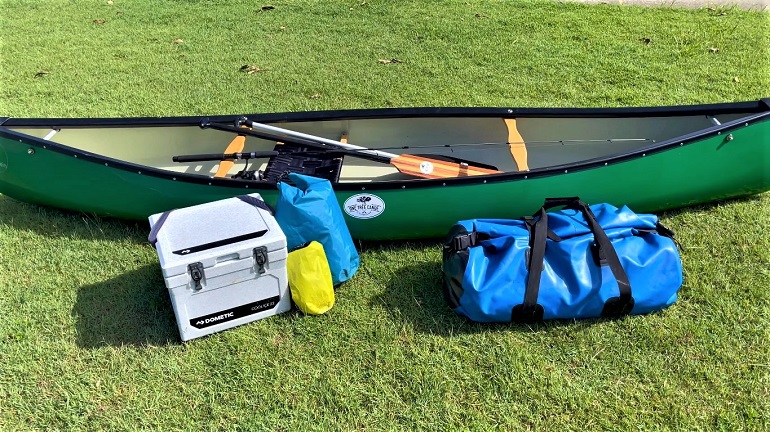
Canoes are also the more stable of the two. Even in challenging conditions, you won’t have to worry about capsizing your ride. This stability is great for those who may not have the strength to deal with tough situations.
Another canoe advantage is that you remain dry despite the totally open hull of the canoe.
The Disadvantages of a Canoe
The issue with canoes is that you are far more exposed than with a kayak. While remaining dry is easier in a canoe than with a kayak, partly because you sit higher, protecting your gear from the elements is not possible, especially if it is raining.

Canoes are also heavy and not at all easy to transport. There are inflatable canoe options, but they aren’t well known and perform vastly differently from a regular canoe.
A lot more energy will be required to reach high speeds with a canoe, and not just because you have one less single-bladed paddle. Recreational canoes are wider and heavier than a kayak.
The Advantages of a Kayak
A kayak can go much faster and much quicker than a canoe. Less effort is required of you to reach top speed, and you can forget about having to worry about taking alternate strokes on alternate sides.
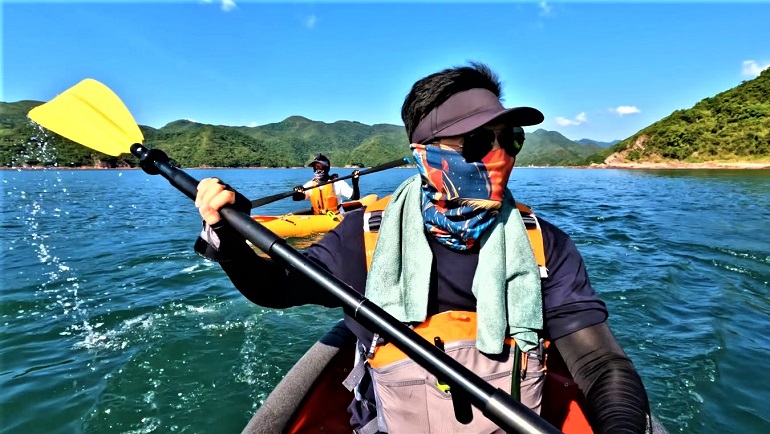
Recreational kayaks are also easier to transport and carry. There are plenty of inflatable options that are a solid pick-up, and any extra gear you bring along can be kept in dry storage. A highly underrated feature.
The biggest difference is that the seating is much more comfortable. You get to have your legs extended. A kayak is also much more maneuverable than a canoe.
The Disadvantages of a Kayak
Kayaks are awesome, but my main issue with them is that you will get wet. You can’t just have a calm outing and expect to remain dry. You sit too low, and the kayak is too low into the water itself for this to be a real possibility.
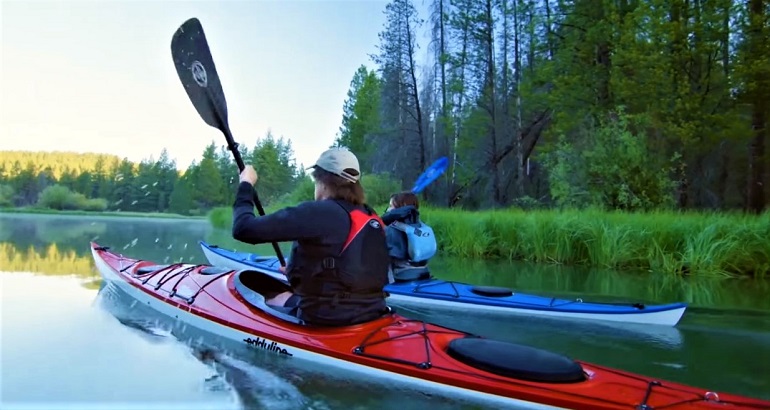
My other complaint is that handling rough waters in an inflatable kayak is significantly more challenging and scarier than with a canoe. Feeling like you are about to tip over is very common, and while it can be exhilarating, it’s not something that you’ll want to happen.
You could use a spray skirt; however, it will take you a while to get used to it. In the event of a capsize, a spray skirt can feel like a death trap.
Canoe vs. Kayak: And the Winner Is…
If you want something to take out in calm waters that is stable and will keep you dry throughout your journey, choose a canoe. A canoe is also optimal for bringing someone along and setting up a nice picnic. Sounds nice, right?
But a kayak is for you if you like to go on adventures by yourself, love feeling the weather on your skin, and aren’t afraid of getting stuck. On whitewater waves, kayaks, especially whitewater kayaks, will give you the thrill of adventure you’re looking for.
Keep in mind that a boat is harder to move, both in and out of water. The storage room and stability, on the other hand, are perfect.
If you want to explore the water without spending a lot of money, the best kayak under 500 is a good option. It’s cheaper than more expensive boats and makes it easy to get started with kayaking.
My Final Thoughts
Canoe and kayak may look the same at first glance, but they are very different. Before you decide on a kayak or canoe, you should really think about the bad things about each.
If you want to know which one works best for you, I think you should look at their cons.




